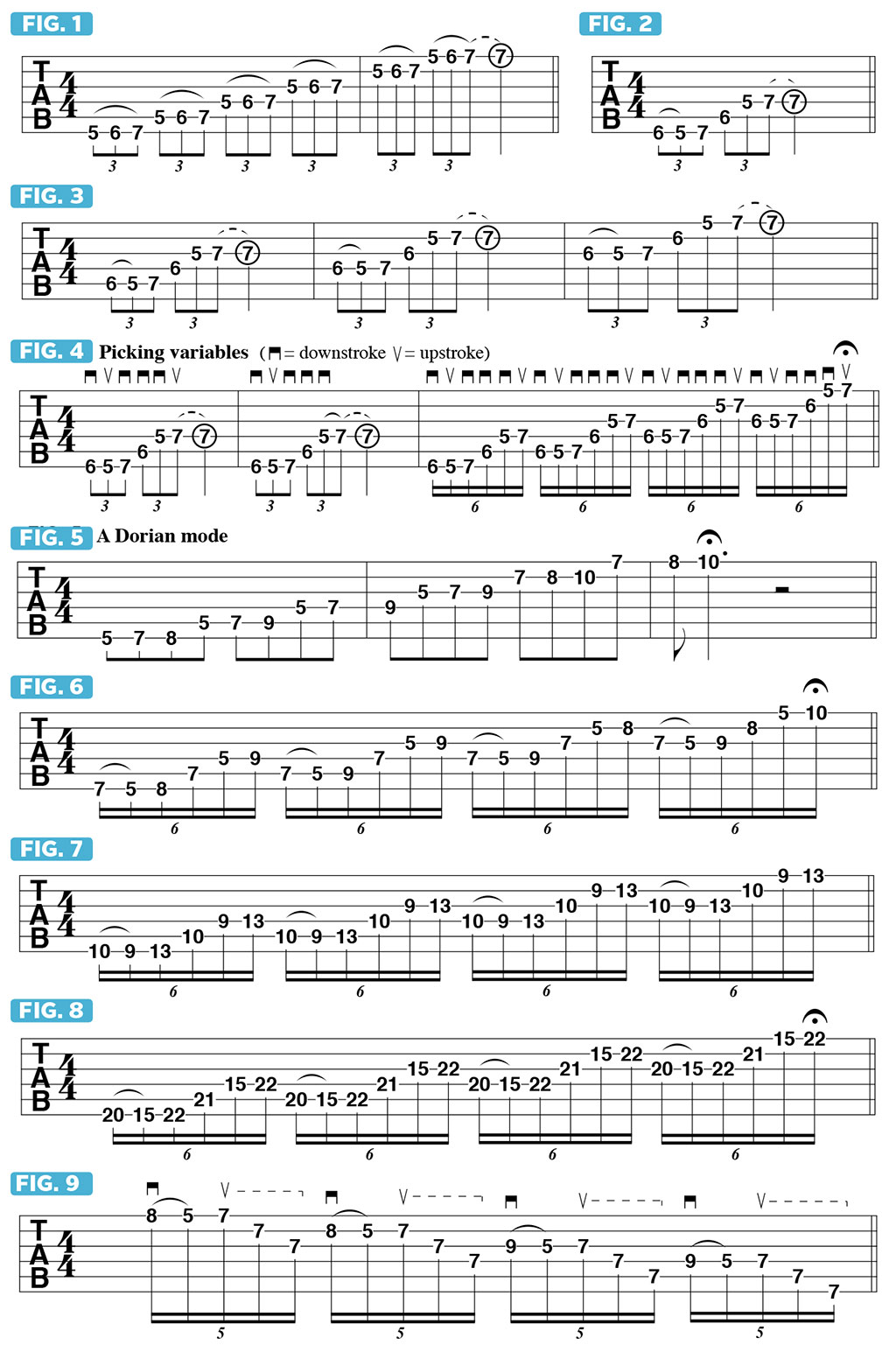These 9 randomized fretboard patterns will help you explore new musical territory
Dweezil Zappa explains the concept of randomization and how it'll take your playing to the next level
One of my favorite things to do when exploring new lines is incorporate the concept of randomization. My approach is to begin with symmetrical fretboard patterns that are easy to remember, and then apply the same phrasing and rhythms to different note sequences, thus the random nature that this concept can lead you to.
With this specific approach, the pick-hand moves through the sequences in the same way, enabling you to pick the strings on auto-pilot while the fret hand is free to use whatever notes you choose to play.
Let’s begin with a simple example, shown in FIGURE 1, where three ascending chromatic notes are played per string in a symmetrical fashion. Each string is picked only once, on the first note, and the following two notes are sounded with hammer-ons.
Let’s now rearrange the notes into the sequence shown in FIGURE 2. We’re still utilizing an eighth-note-triplet rhythm, but the melodic pattern is different. FIGURE 2 covers the bottom three strings, so we can now move up through the next three sets of three adjacent strings, as in FIGURE 3.
Let’s now focus on the picking pattern. As shown in the first two bars of FIGURE 4, the first three notes are picked down - up - down, and the next three notes are picked down - down - up. One variation is to forgo the upstroke and hammer-on the last note. The pattern is played in double-time, as sextuplets, in bars 3 and 4 of FIGURE 4.
You can then apply that idea to any scale, for example, A Dorian mode (A, B, C, D, E, F#, G) as shown in FIGURE 5. If we apply the same picking pattern and string jumping scheme from the previous example, but remain diatonic to (within the scale structure of) A Dorian, we end up with FIGURE 6.
This approach can be applied to any scale, but another angle is to totally randomize it and play any notes of your choosing while using the same picking pattern and tweaked symmetry to the melody. This can result in some crazy-sounding shapes, such as the one in FIGURE 7.
All the latest guitar news, interviews, lessons, reviews, deals and more, direct to your inbox!
The note choices are limitless. If you want to make it even more challenging, move way up to the top of the fretboard and use wide stretches, you can play something like the phrase shown in FIGURE 8. Remember, the pick hand is on auto-pilot here, but the fret hand is free to sound whatever notes you want.
I like to devise other lines similarly based on repetitive rhythms, such as that shown in FIGURE 9. This is a simpler pattern built from two notes followed by three, resulting in groups of five as I descend through A Dorian. The picking pattern remains identical as you roll through each group.
Dweezil Zappa is a brilliant guitarist and son of the legendary Frank Zappa. For the last 12 years he has toured the world performing his father’s music with Zappa Plays Zappa and other ensembles. His latest album is Confessions of a Deprived Youth (Deep Fried Youth).

